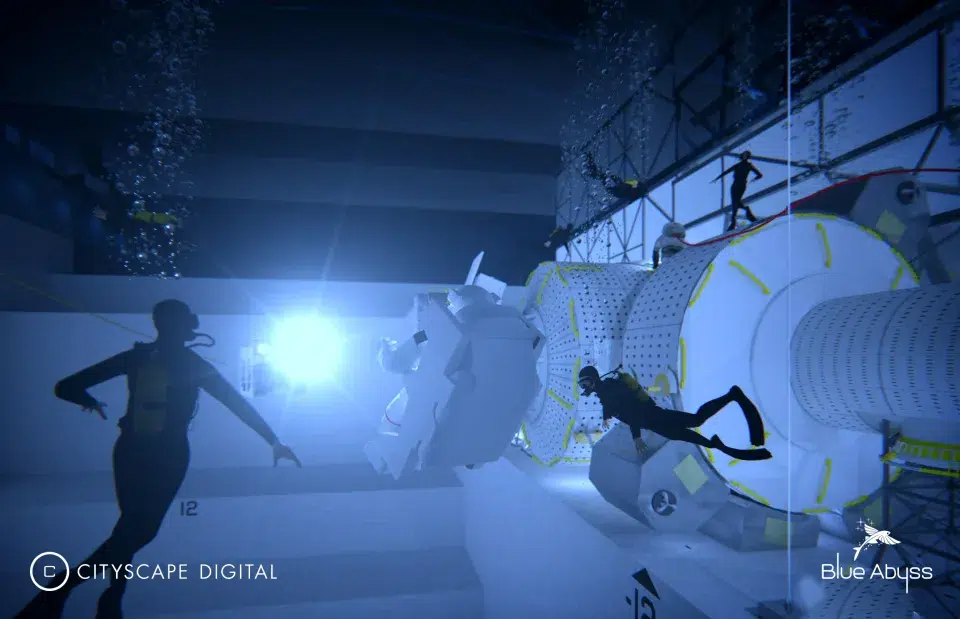Visitors to the Aerohub Enterprise Zone at Newquay Airport in Cornwall, UK may spot the first foundations of a brand new testing and training facility, dedicated to extreme deep-sea and space environment research. The 10acre Blue Abyss facility aims to give a monumental boost to the development of future space and marine exploration programmes, serving as both a state-of-the-art testing centre and a networking hub for maritime, offshore and cross-sector collaborations.
The Blue Abyss project is headed by CEO John Vickers, a technology consultant and former armed forces diving instructor. “We want to reignite the spirit of entrepreneurship in the UK,” he tells Ship & Boat International – conceding, however, that this has proven a harder slog than it needs to be. Promoting Blue Abyss directly to government ministers usually elicits a glowing response, he says, as evidenced by meetings he attended at 10 Downing Street last year. Paradoxically, though, for all the ministerial declarations of commitment to innovation, the civil servants always seem to drag the focus back to cost.
“We have to get rid of the “It’s a risk!” mentality,” Vickers opines. “Britain does very well when it comes to innovation and trading – but, when things get political at the governmental and civil service level, they often fall flat.” As such, Vickers has not actively sought governmental funding for the Blue Abyss project. Instead, it is being bankrolled to the tune of £150 million (US$189 million) by two tech specialists: one based in Europe, the other in the US. He adds that he expects 60-70% of Blue Abyss’ initial business to come from the maritime and offshore segments for the first few years of the facility’s existence, with the number of space industry customers set to steadily grow with time. The centre will also generate 160 jobs and is predicted to put £8 million back into the Cornish economy on an annual basis.
Scheduled for completion in 2024, the facility will feature a sliding roof, designed to resemble a horseshoe crab morphing into the tail-end of a comet, representing the synergies between the sea and outer space. “Space is quite similar to maritime: they’re both harsh, three-dimensional environments,” says Vickers. “ROVs are another common bond between the sea and space, and will be essential if we’re ever going to move off this planet in a meaningful way.” The facility has been designed by British architect Robin Partington, who led the design team for The Gherkin in London.
The pool will measure 50m x 40m on the surface, descending to 50m at its deepest point, and will boast the capacity for 42,000m3 of water. One section of the pool will be used primarily for maritime/offshore simulations and training, and will feature downwards steps in increments between 3-25m. The second section will feature the Astrolab: a table-like platform dedicated to astronaut training, located at a depth of 12m. The Astrolab will have the capability to house a mock-up section of the International Space Station.
End users will potentially include institutions, universities, OEMs, energy companies, naval architects, rescue agencies, naval forces and robot developers – to mention but a few. The Blue Abyss facility will offer the use of: hypobaric and hyperbaric chambers, supervised by qualified diving trainers and dive chamber specialists; a micro-gravity suite; tie-down points on the pool floor, for trials related to seabed anchoring; and a 30tonne-capacity crane and lifting platform. The crane will be used to lift additional objects into and out of the pool, to assist specific real-world simulations. For example, mock-up wind turbine towers, Christmas trees and blowout preventers could be temporarily installed for operators and/or OEMs working to improve offshore safety. The pool could also accommodate replica shipwrecks, and even cave systems.
The pool will also serve as a testbed for ROVs, AUVs and semisubmersible drones – for instance, a pipeline could be laid across the bottom of the pool and a robotic inspection crawler prototype sent down to engage with it, enabling the developer to analyse the bot’s performance. Other features will include the ability to adjust light levels in certain sections of the pool, including an option for total darkness. Although the pool will not offer fixed wave generators, clients can temporarily install and use this technology if it assists their research.
“We are already talking to companies, institutions and agencies who can already see the long-term prospect for such a facility; maritime projects are typically planned months to years in advance, and space projects years to decades,” he continues. “This will provide scope for collaboration: we could host collaborative workshops, helping individual companies to save hundreds of thousands – if not millions – by sharing resources and reducing overall testing time.”
The Blue Abyss facility will also host six classrooms, enabling clients to balance hands-on experience with theory, and hotel facilities. In addition to the Cornwall facility, Vickers confirms that the Blue Abyss team is now speaking to NASA and the Defense Advanced Research Projects Agency (DARPA) in the US, with a view to establishing two similar North American sites, and that the group is also in discussions with interested parties in the Middle East and Southeast Asia.
(For the full article, please see Ship & Boat International July/August 2022)






